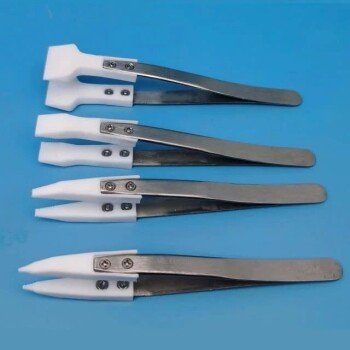XRF (X-ray fluorescence) analyzers are versatile tools capable of detecting a wide range of metals and elements.
They are invaluable in various industries including scrap metal sorting, precious metal analysis, and environmental testing.
XRF analyzers can detect elements from magnesium (Mg) to uranium (U).
These analyzers are used in applications such as alloy grade identification, quality control in metal manufacturing, geological exploration, and testing consumer products for contaminants.
XRF analyzers are non-destructive and can analyze samples of any shape and size without compromising their integrity.
5 Key Points Explained: What Metals Can XRF Detect?

1. Range of Detectable Elements
XRF analyzers can detect elements from magnesium (Mg) to uranium (U).
This broad spectrum includes both light and heavy elements, making them suitable for a wide range of applications.
2. Applications in Metal Sorting and Analysis
Scrap Metal Sorting
Portable XRF spectrometers are used to analyze a wide range of metal alloys, including ferrous and stainless steel, copper, aluminum, nickel, and other types of alloys.
This helps in quickly and reliably determining the elemental composition of scrap metals.
Precious Metals Analysis
XRF analyzers are indispensable for buying or selling precious metals and jewelry.
They can determine the composition of precious alloys with high accuracy and identify gold plating or other types of coatings.
3. Non-Destructive Testing
XRF technology allows for the analysis of samples without any destructive treatment.
This preserves the integrity of the sample and simplifies sample preparation, making it ideal for analyzing valuable or irreplaceable items.
4. Versatility and Ease of Use
The handheld XRF spectrometer is a versatile tool that can be used in various fields such as material science, geology, and environmental testing.
Its ease of use and non-destructive nature make it an excellent solution for many production processes.
5. Detection of Toxic Heavy Metals
Handheld XRF analyzers are also used to detect toxic heavy metals in consumer products.
Common elements determined in this application include lead (Pb), mercury (Hg), cadmium (Cd), and selenium (Se).
6. Cost Considerations
The price of an XRF analyzer is influenced by factors such as the detector type, size of the X-ray detector, anode target, and accessories.
Understanding the required results for the elements being tested helps in determining the appropriate budget for an analyzer.
In summary, XRF analyzers are powerful tools for detecting a wide range of metals and elements.
They are essential in industries such as scrap metal sorting, precious metal analysis, and environmental testing.
Their non-destructive nature and ease of use enhance their versatility and applicability across various fields.
Continue Exploring, Consult Our Experts
Unleash the Power of XRF Analyzers with KINTEK SOLUTION!
Experience unmatched precision across metal analysis, scrap sorting, and environmental testing.
Our cutting-edge devices detect elements from magnesium to uranium, offering non-destructive testing for samples of any size.
Dive into the future of lab tech—contact us today to explore how KINTEK SOLUTION's advanced XRF analyzers can revolutionize your operations!











